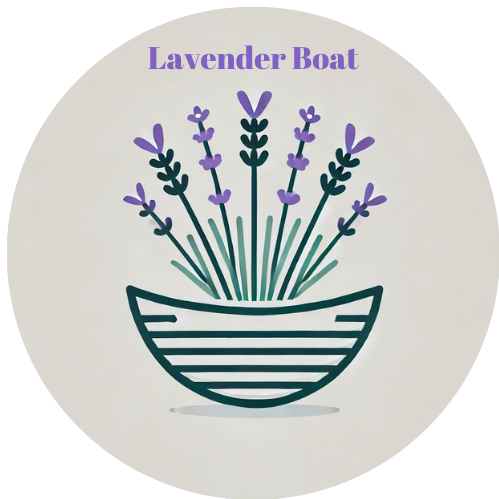An Intro to the History of Lavender – lavender has over 2,500 years of history spanning the Mediterranean, Europe, and Asia. Used since ancient times for perfumes, mummification, and therapeutics, lavender gained popularity in the Middle Ages. Spreading to Europe and the New World, lavender became valued for cooking, beauty, and medicinal purposes.
Listen to this
or read on
In what ways has lavender developed over time
Lavender has been prized for its beautiful flowers and aromatic scent for thousands of years. This fragrant purple plant has a long and rich history of cultivation spanning continents, cultures, and millennia.
From its early beginnings in the Mediterranean region to its spread across Europe in the Middle Ages to modern applications all over the globe, lavender has remained a staple plant grown for its multitude of uses.
Today lavender is popular not just for its floral beauty but for its various applications – from perfumes and cosmetics to medicinal remedies to culinary flavourings.
The demand for lavender continues to grow as more of its therapeutic benefits are revealed.
The origins and fascinating story of how lavender became a coveted plant worldwide is filled with serendipitous discoveries, innovations, and determined farmers who built an industry around this aromatic wonder herb.
Origin and Early History
Lavender is native to the Mediterranean region, the Middle East, and India. Its use dates back over 2,500 years to ancient Egypt, where lavender was first cultivated for use in mummification rituals and perfumes.
The ancient Egyptians also used the flowers to create essential oils for both religious ceremonies and beautification. From Egypt, lavender spread to ancient Greece and Rome. The Romans discovered lavender made excellent additions to their famous public baths, providing pleasant scents and relaxation. The antibacterial properties of Lavender also helped disinfect the baths and keep them clean. Romans used lavender for cooking, perfumes, and medicinal remedies.
As lavender gained popularity across Europe in ancient times, it was prized for its aroma and healing capabilities. Monasteries cultivated their own lavender to use in fragrances, insect deterrents, and pharmaceuticals. The ancient origins and applications of lavender laid the early foundations for the expansive uses we still benefit from today.
Middle Ages Through Renaissance
During the Middle Ages, lavender continued gaining popularity across Europe. As new lavender varieties were introduced from the Mediterranean, people discovered additional uses for the plant.
Lavender became a customary inclusion in gardens of castles, abbeys, and townspeople. Its pleasant fragrance led it to be used for scenting clothes, foot baths, and animal bedding.
The antiseptic qualities of lavender also made it useful for dressing wounds and repelling disease.
Lavender appeared often in medieval art, architecture, poems, and plays as a symbol of purity and grace.
During the Renaissance period, lavender saw a resurgence as an ingredient in perfumes and soaps as bathing became more common again. New medicinal applications emerged, with lavender being used to treat nervousness, insomnia, and headaches.
As knowledge spread among early physicians and herbalists, the therapeutic benefits of lavender became more widely recognised.
Colonial America
Lavender made its way to the New World along with the early European settlers. Colonists brought lavender seeds with them for use in fragrances, medicinal remedies, and as decorative elements.
The pleasant familiar scent of lavender provided comfort to many settlers who were missing their homeland. Lavender grew well along the eastern seaboard and was traded frequently between emerging colonies.
By the 18th century, lavender could be found in formal colonial gardens as ornamentation and in workaday home gardens as a useful herb. It was fashionable for colonial women to create pressed lavender sachets to perfume clothing and linens.
Lavender wreaths and dried flower arrangements were common. With its antiseptic qualities, lavender tea and tinctures were used to treat cuts, headaches, and nervous stomachs.
The colonial American appetite for lavender influenced the steady growth of its domestic cultivation.
Modern Cultivation
By the late 19th century, lavender farming had greatly expanded beyond the Mediterranean region, with large-scale production taking off in England and France. Growers learned they could increase lavender oil yields by distilling it via steam, leading to more efficient extraction methods.
Lavender’s popularity as a versatile plant prompted its spread to Australia, New Zealand, and North America. In the early 1900s, lavender farms began cropping up in California, Oregon, and Washington. Growers discovered ideal conditions for cultivating different lavender varieties in these western states.
As technology for irrigation, harvesting equipment, and oil distillation advanced, lavender farming became less labour-intensive. The reduced workload along with lavender’s profitable oil inspired more farmers to enter the budding industry, resulting in a boom of lavender cultivation in the modern era.
Lavender Today
In the present day, lavender continues being produced globally both commercially and on small farms. Some of the top producers include France, Bulgaria, Australia, and the United States. Lavender appears in a wide array of products from perfumes, cosmetics, aromatherapy, food flavorings, teas, and more.
As research uncovers additional medicinal benefits, demand keeps increasing for lavender’s therapeutic uses. Environmentally-conscious farms are focusing on sustainable and organic growing practices. There is also more interest in exotic and rare lavender varieties for their unique scent profiles. Lavender’s long cultivation history has enabled the development of hundreds of diverse species tailored to different climates and needs. Although technology has accelerated production, much lavender farming tradition remains the same. From seed to harvest to distillation, cultivating lavender is an art passed down through generations. The future of this aromatic herb looks bright as innovators find new ways to utilize and spread lavender’s gifts.
Final Thoughts
From ancient civilizations to medieval castles to colonial homesteads, lavender has decorated and scented spaces for over two millennia. First prized for its perfume and medicinal virtues, lavender charmed its way into the gardens, rituals, and products of cultures across Europe, North Africa, and the New World. Lavender’s diverse applications from bathing to cooking to healing have secured it a permanent place throughout human history.
While fashions and technologies for cultivating lavender have evolved, what persists is lavender’s beloved status as a beautifying, calming, and therapeutic plant. Its light floral aroma and vivid purple blossoms are tied to centuries of memories, traditions, and fascinating origins waiting to be uncovered. The rich story of lavender’s cultivation is both vibrant and fragrant, leading us from ancient Mediterranean civilizations to the latest innovations that will carry this special herb into the future.






